In the majority of the zinc operations, sphalerite (ZnS) is associated with galena and often sulfides of iron and copper. It is therefore essential to arrange the flowsheet not only for recovery of the valuable minerals, but also to selectively separate them into products acceptable to the smelters for ultimate conversion into metal.
The flowsheet outlined above is typical for the average small lead-zinc mill up to about 100 tons per day. For larger plants, it is generally advisable to provide two stage crushing, and also thickening of the lead and zinc concentrates prior to filtration.
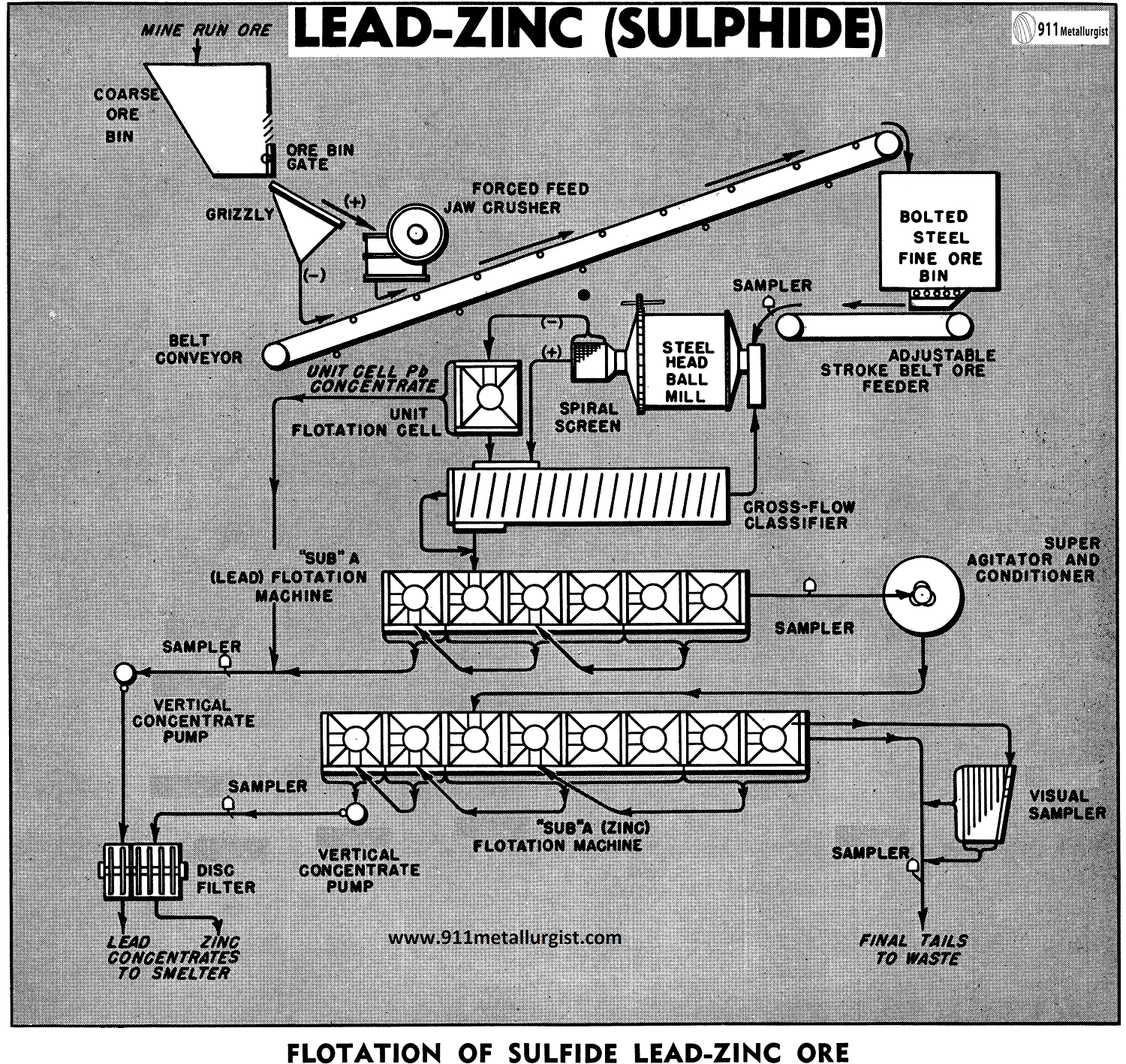
Lead/Zinc Separation Process and Circuit Flowsheet
Extensive batch and pilot plant testing and actual plant operating experience has established the above flowsheet as typical for the average zinc sulfide ore containing galena and usually pyrite in a lime or siliceous gangue. Laboratory tests, however, should always be made to establish the grinding necessary, equipment requirements, and metallurgical results before proceeding with any installation.
The flowsheet, as outlined, incorporates single stage crushing of the mine run ore. This is usually accomplished on the day shift and with the arrangement shown, a product minus 1½” in size can be expected on an average. The fine ore bin should have sufficient storage capacity to operate the mill for at least 24 hours. There are larger crushing plant arrangements 100 tons per day and larger.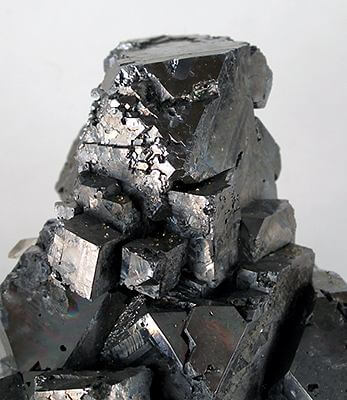
The grinding circuit as shown provides for removing the lead mineral as soon as free with the Unit Flotation Cell. When grinding the average lead and zinc ore to minus 48 or 65 mesh, the lead mineral particles overflowing the classifier will, for the most part, be all minus 200 mesh. This is due to the difference in gravity between galena (SG 7.4 – 7.6) and the gangue (quartz sp. gr. 2.65, calcite 2.7). The Unit Flotation Cell will efficiently handle minus ¼” ball mill discharge and recover much of the lead as soon as it is free and reduced to flotation size. Often up to 70-80% of the lead can be recovered at this point in a high grade product which filters rapidly and is generally very low in zinc content. Zinc depressant reagents are at their highest concentration in the grinding circuit; hence, selectivity of separation by flotation is often at its best right at this point.
As an alternate for or in conjunction with the Unit Flash Cell, the Mineral Jig should always be considered and its use established by test. Crystal structure, degree of mineral association, contaminating salts, oxidation, presence of precious metals, etc., are the determining factors in establishing whether these machines are to be used separately, together, or eliminated from the flowsheet. Highly floatable or activated zinc can often be rejected almost completely in the Mineral Jig lead concentrate, thus making it possible to obtain an overall satisfactory separation which would otherwise be extremely difficult by straight selective flotation of the classifier over-flow product.
With a Unit Flash Flotation Cell in the grinding circuit, generally a six cell “Sub-A” Flotation Machine in a 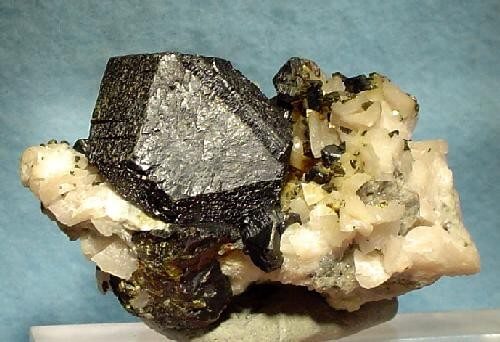 size to give the necessary contact time, will provide adequate flexibility for at least two- stage cleaning, usually necessary to grade the lead up to market requirements. Conditioning with the zinc depressants and lead flotation reagents is accomplished right in the grinding circuit; hence, only in special cases is it necessary to include a conditioner ahead of the lead cells.
size to give the necessary contact time, will provide adequate flexibility for at least two- stage cleaning, usually necessary to grade the lead up to market requirements. Conditioning with the zinc depressants and lead flotation reagents is accomplished right in the grinding circuit; hence, only in special cases is it necessary to include a conditioner ahead of the lead cells.
Lead rougher tailings are conditioned in a Super Agitator and Conditioner to activate the zinc and prepare it for flotation. Lime is normally used for alkalinity control and in depressing iron sulfide minerals. Usually, the pH of the pulp in the zinc circuit is maintained between 9.5 to 10, but in certain special cases an alkalinity higher or lower may be beneficial to the separation. Copper Sulphate is universally used to activate sphalerite for subsequent recovery by “Sub-A” Flotation. This reagent is added to the conditioner along with the lime.
An eight cell “Sub-A” Flotation Machine of the proper size as determined by test is recommended for zinc flotation. This machine provides adequate flexibility for at least two stages of cleaning and also scavenging capacity for ensuring the lowest possible final tailing. multi-bladed impellers are recommended in at least the last two cells to provide increased cell action and aeration for scavenging the last trace of floatable zinc mineral before tailings are discarded to waste. The multi-bladed parts are available at present for No. 18 Special machines and larger and will provide approximately double the aeration with little or no increase in horsepower input.
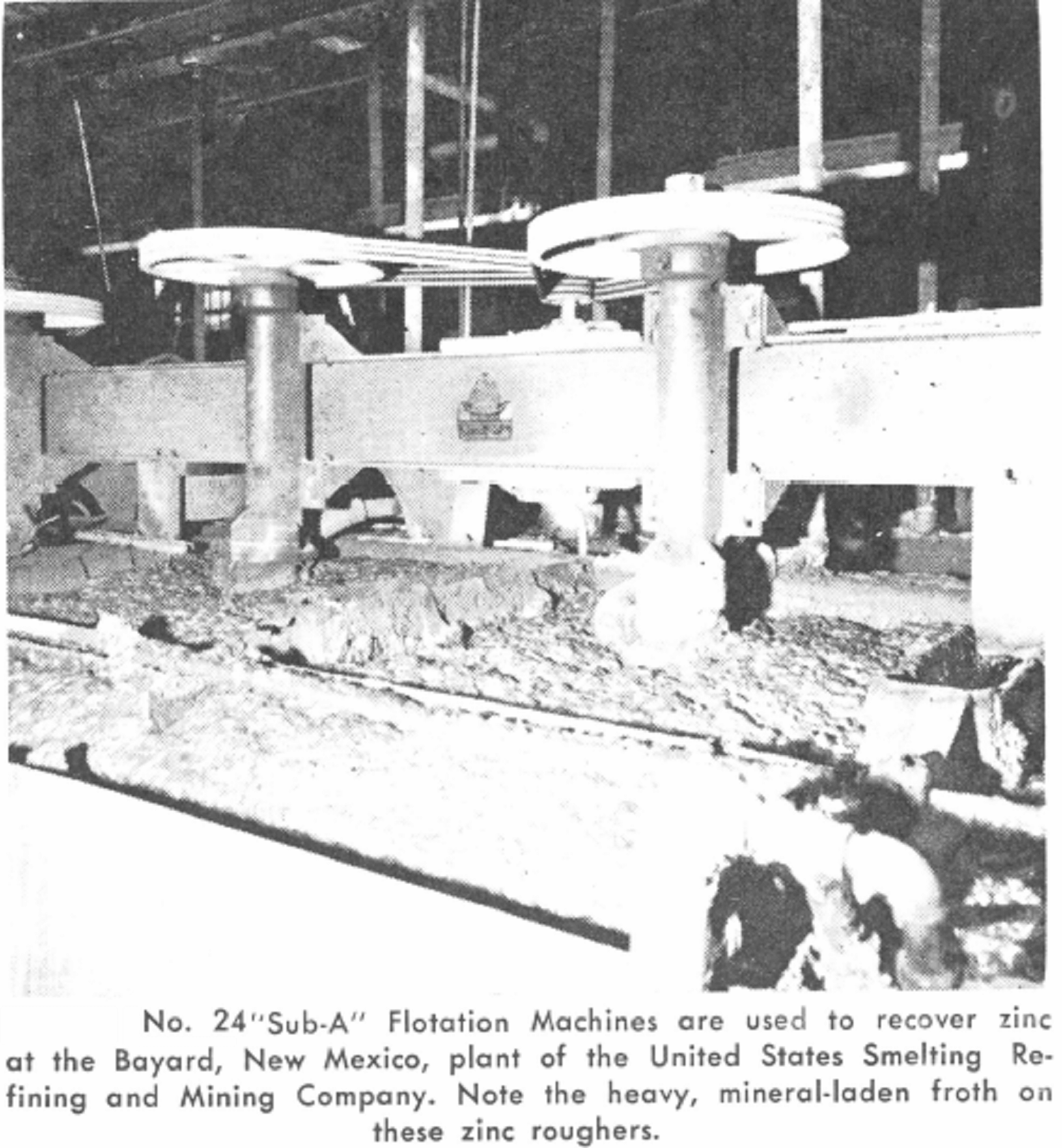
Automatic sampling at the points indicated in the flowsheet will provide an accurate metallurgical balance on the separation and recovery. A Visual Sampler operating continuously on the zinc tailing provides a rapid method for the operator to check plant control and reagents.
Typical results on a lead-zinc ore employing the flowsheet as outlined but with the Mineral Jig in the grinding circuit are as follows:
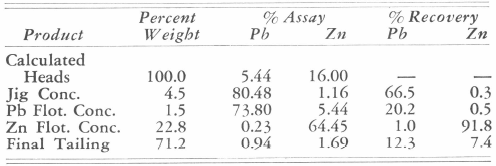
Note the excellent recovery and grade of lead obtained from the Mineral Jig and also the grade of the final zinc concentrate. The ore in this case was slightly oxidized as indicated by the lead and zinc tailing losses.
https://www.911metallurgist.com/silver-lead-zinc-ore-treatment-method
https://www.911metallurgist.com/lead-zinc-flotation-separation-method
Source: This article is a reproduction of an excerpt of “In the Public Domain” documents held in 911Metallurgy Corp’s private library.
